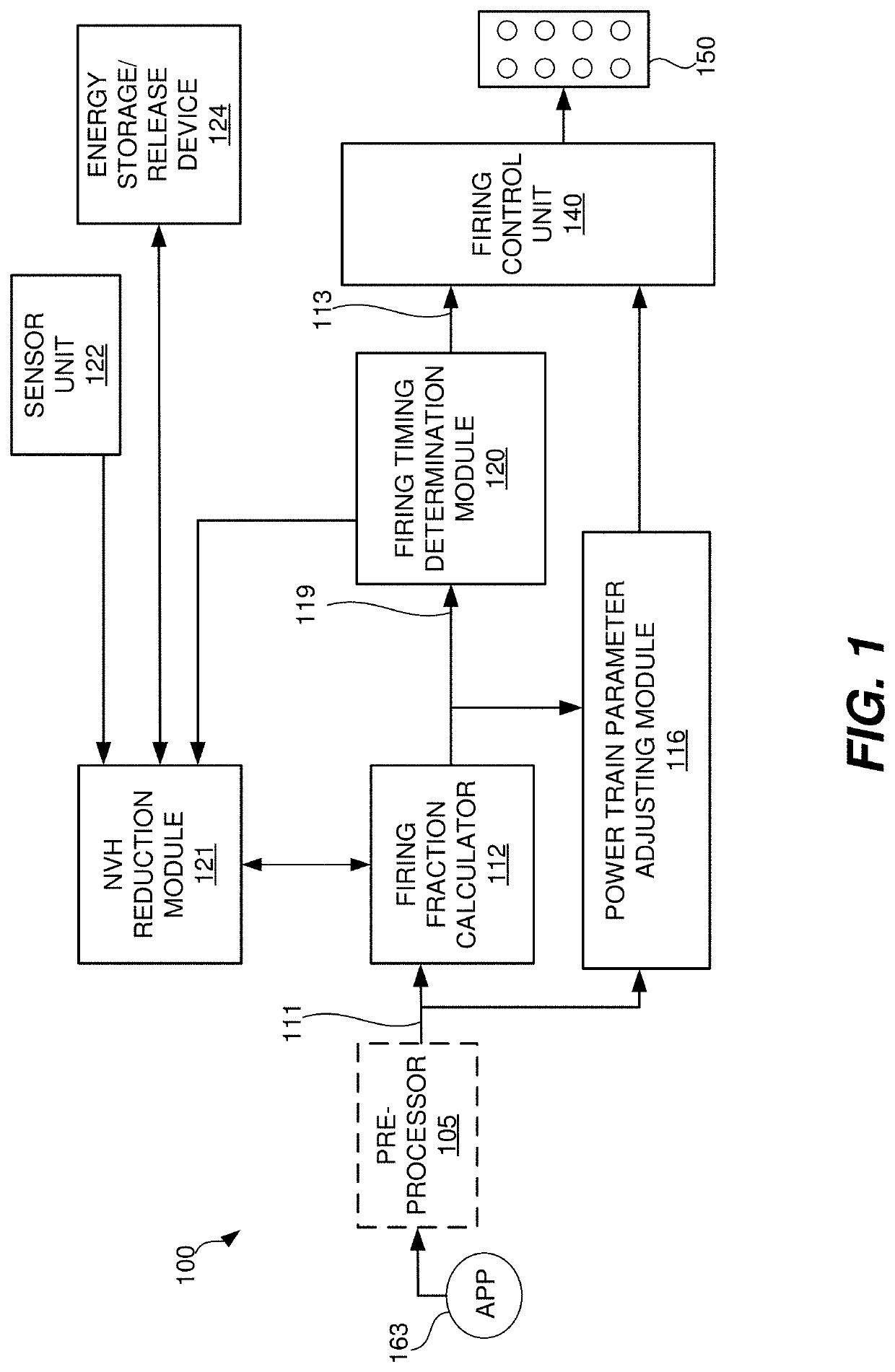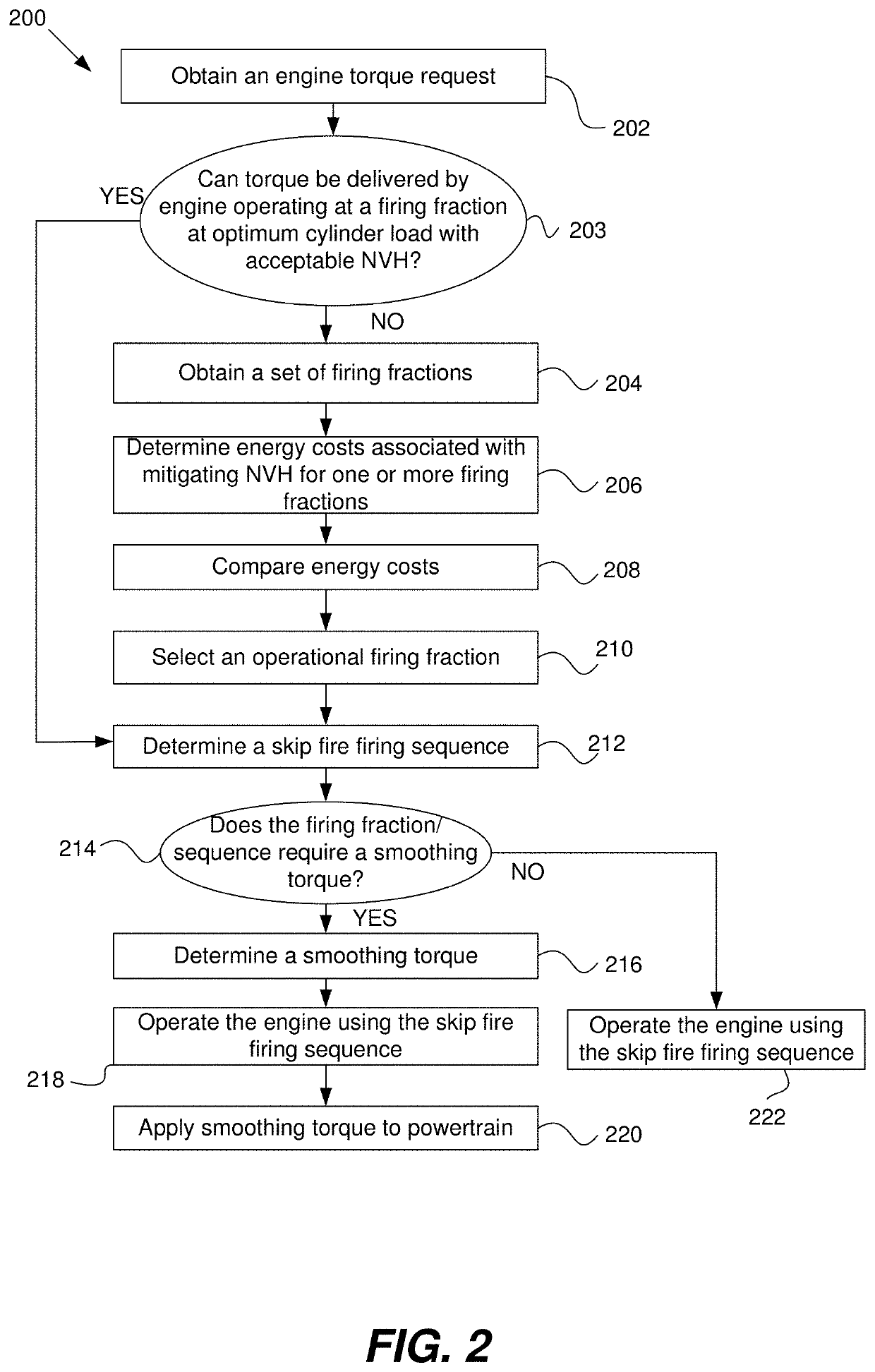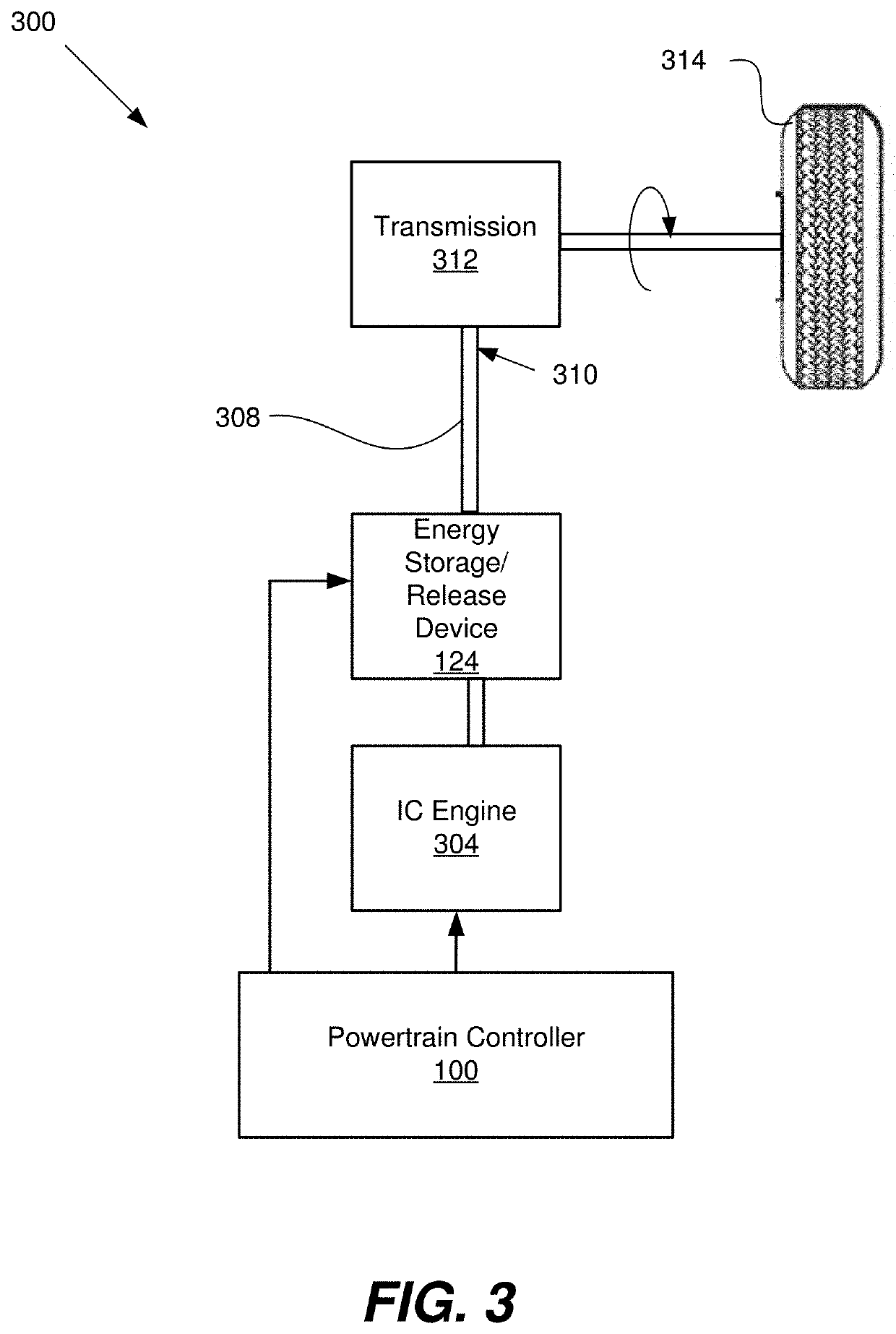Adaptive torque mitigation by micro-hybrid system
a micro-hybrid system and torque mitigation technology, applied in the direction of electric control, machines/engines, output power, etc., can solve the problems of generating undesirable acoustic effects, introducing unwanted firing of cylinders, etc., to reduce noise, vibration and harshness, and fuel efficiency. , the effect of reducing nvh
- Summary
- Abstract
- Description
- Claims
- Application Information
AI Technical Summary
Benefits of technology
Problems solved by technology
Method used
Image
Examples
Embodiment Construction
[0035]The present invention relates to a skip fire engine control system. More specifically, the present invention involves methods and arrangements for using a smoothing torque to reduce noise, vibration and harshness (NVH) in a skip fire engine control system.
[0036]Skip fire engine control contemplates selectively skipping the firing of certain cylinders during selected firing opportunities. Thus, for example, a particular cylinder may be fired during one firing opportunity and then may be skipped during the next firing opportunity and then selectively skipped or fired during the next. This is contrasted with conventional variable displacement engine operation in which a fixed set of the cylinders are deactivated during certain low-load operating conditions.
[0037]Skip fire engine control can offer various advantages, including substantial improvements in fuel economy. One challenge, however, with skip fire engine control is noise, vibration and harshness. More specifically, there ...
PUM
 Login to View More
Login to View More Abstract
Description
Claims
Application Information
 Login to View More
Login to View More - R&D
- Intellectual Property
- Life Sciences
- Materials
- Tech Scout
- Unparalleled Data Quality
- Higher Quality Content
- 60% Fewer Hallucinations
Browse by: Latest US Patents, China's latest patents, Technical Efficacy Thesaurus, Application Domain, Technology Topic, Popular Technical Reports.
© 2025 PatSnap. All rights reserved.Legal|Privacy policy|Modern Slavery Act Transparency Statement|Sitemap|About US| Contact US: help@patsnap.com



